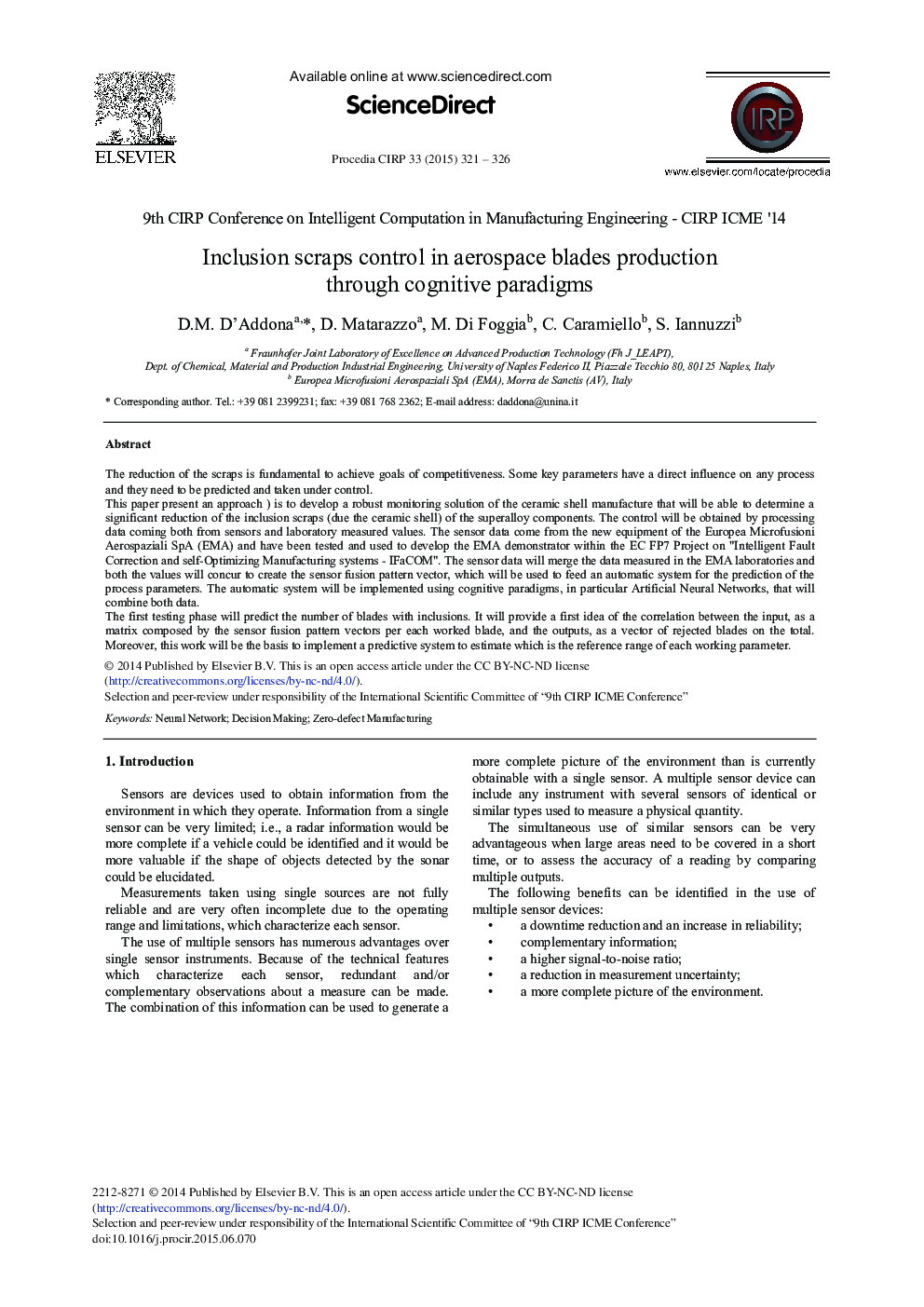| Article ID | Journal | Published Year | Pages | File Type |
|---|---|---|---|---|
| 1699336 | Procedia CIRP | 2015 | 6 Pages |
The reduction of the scraps is fundamental to achieve goals of competitiveness. Some key parameters have a direct influence on any process and they need to be predicted and taken under control.This paper present an approach) is to develop a robust monitoring solution of the ceramic shell manufacture that will be able to determine a significant reduction of the inclusion scraps (due the ceramic shell) of the superalloy components. The control will be obtained by processing data coming both from sensors and laboratory measured values. The sensor data come from the new equipment of the Europea Microfusioni Aerospaziali SpA (EMA) and have been tested and used to develop the EMA demonstrator within the EC FP7 Project on “Intelligent FaultCorrection and self-Optimizing Manufacturing systems - IFaCOM”. The sensor data will merge the data measured in the EMA laboratories and both the values will concur to create the sensor fusion pattern vector, which will be used to feed an automatic system for the prediction of the process parameters. The automatic system will be implemented using cognitive paradigms, in particular Artificial Neural Networks, that will combine both data.The first testing phase will predict the number of blades with inclusions. It will provide a first idea of the correlation between the input, as a matrix composed by the sensor fusion pattern vectors per each worked blade, and the outputs, as a vector of rejected blades on the total. Moreover, this work will be the basis to implement a predictive system to estimate which is the reference range of each working parameter.
